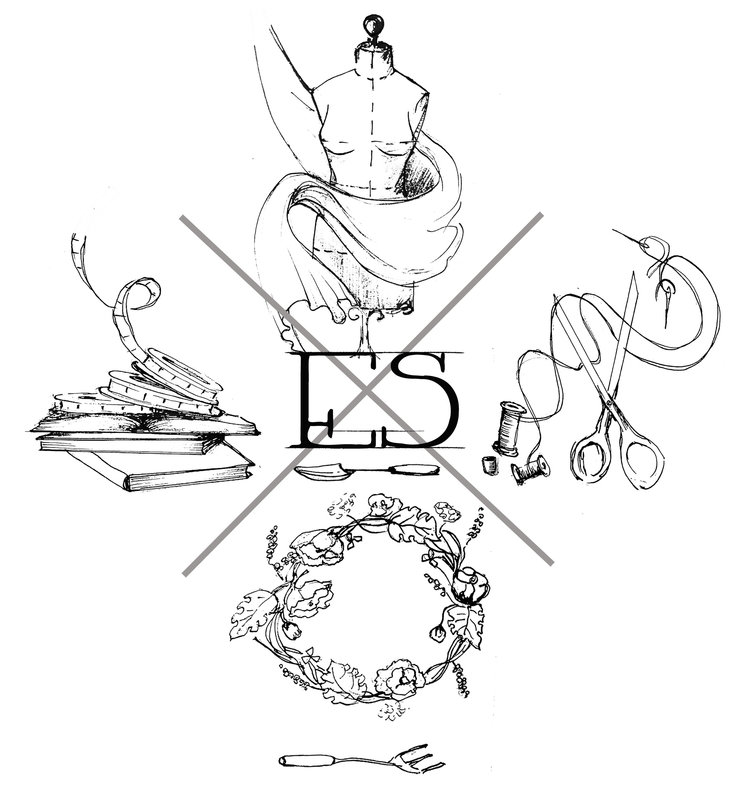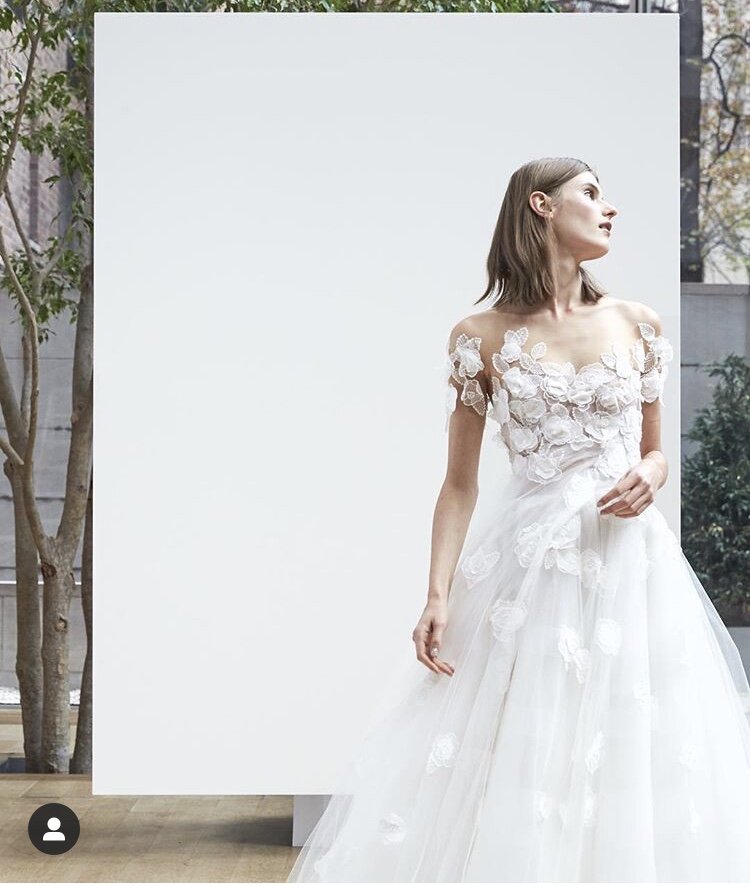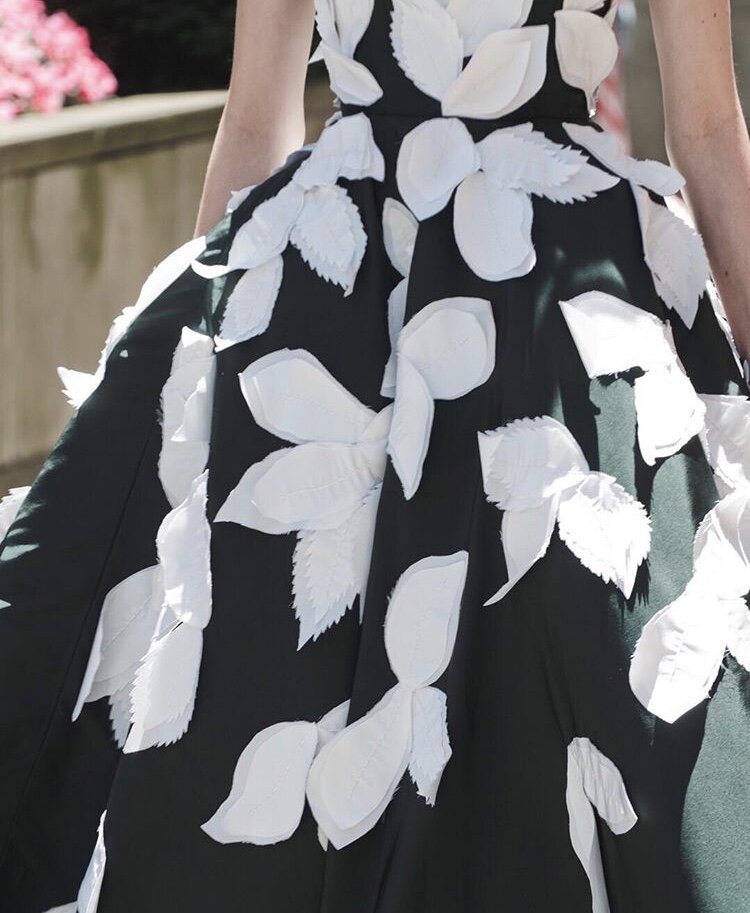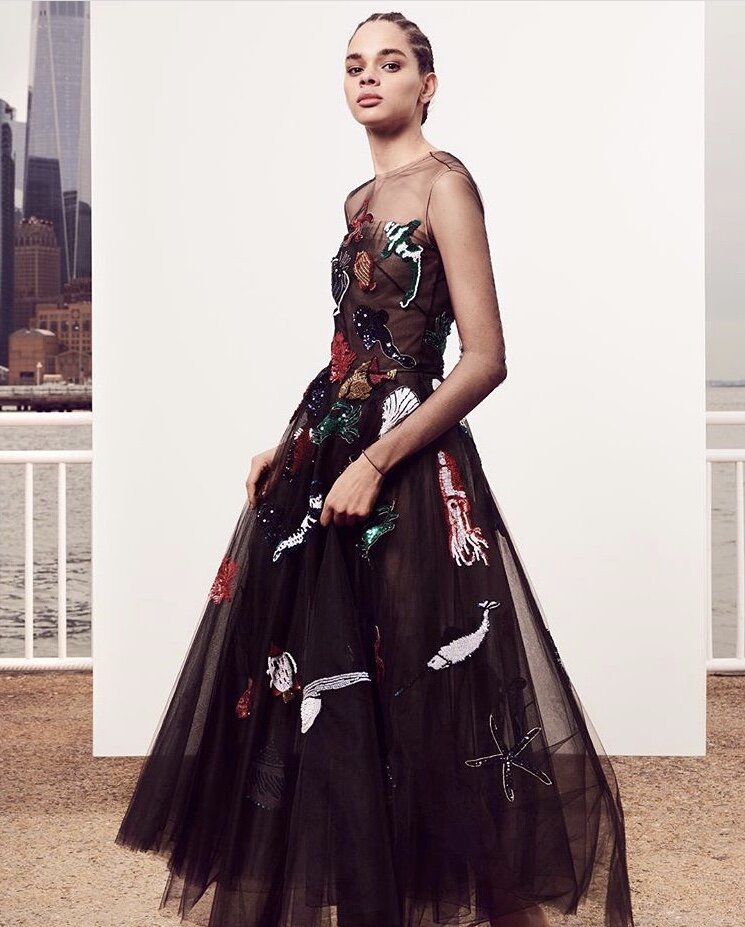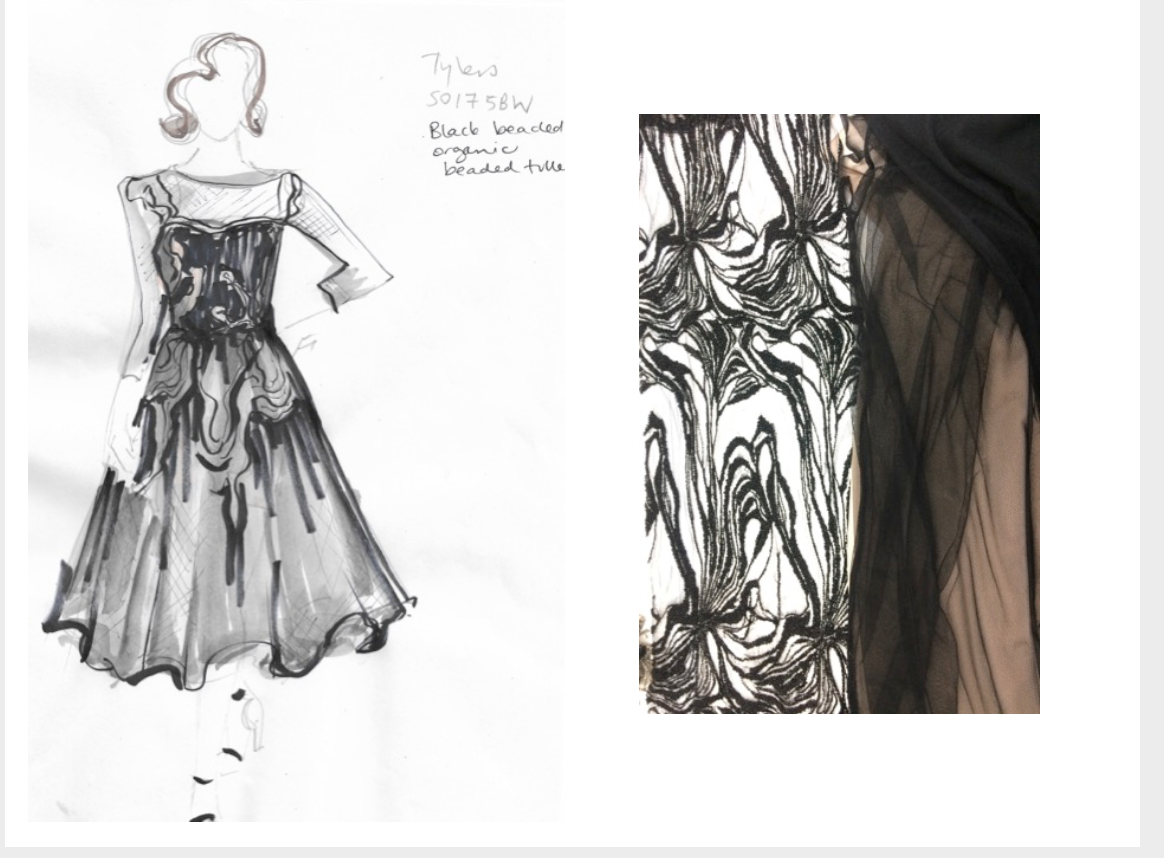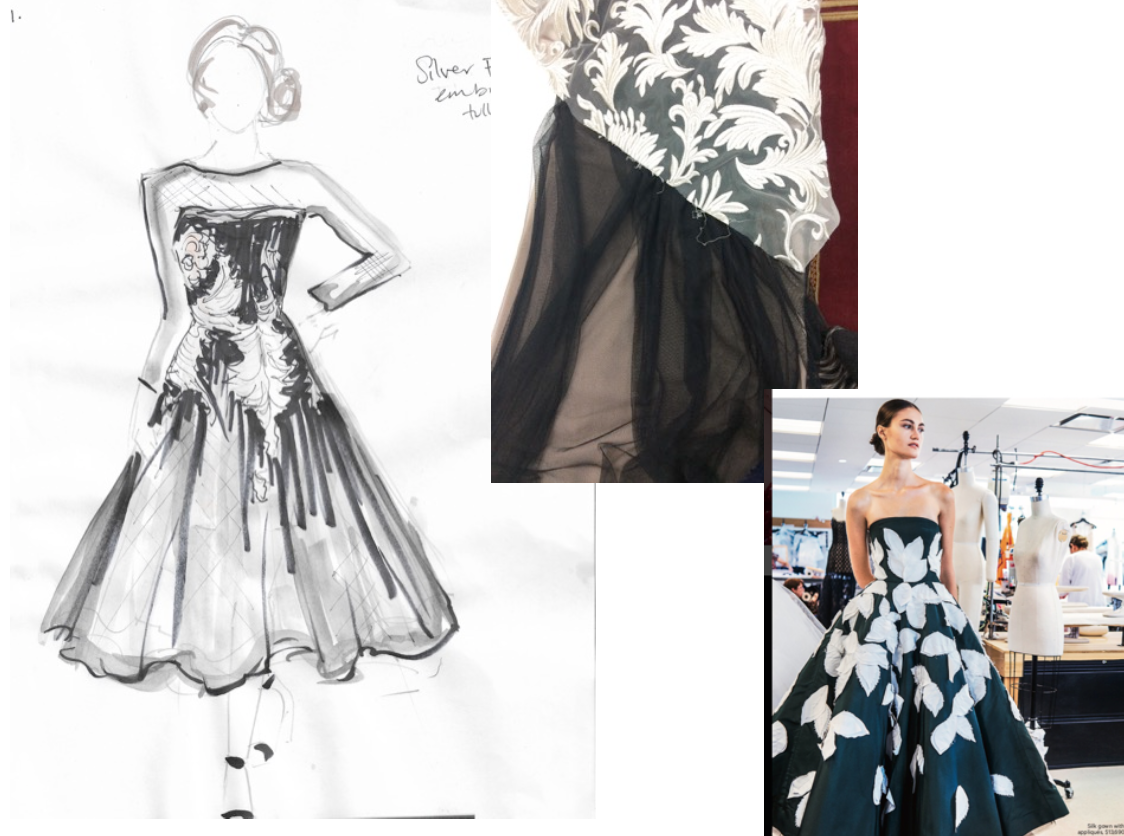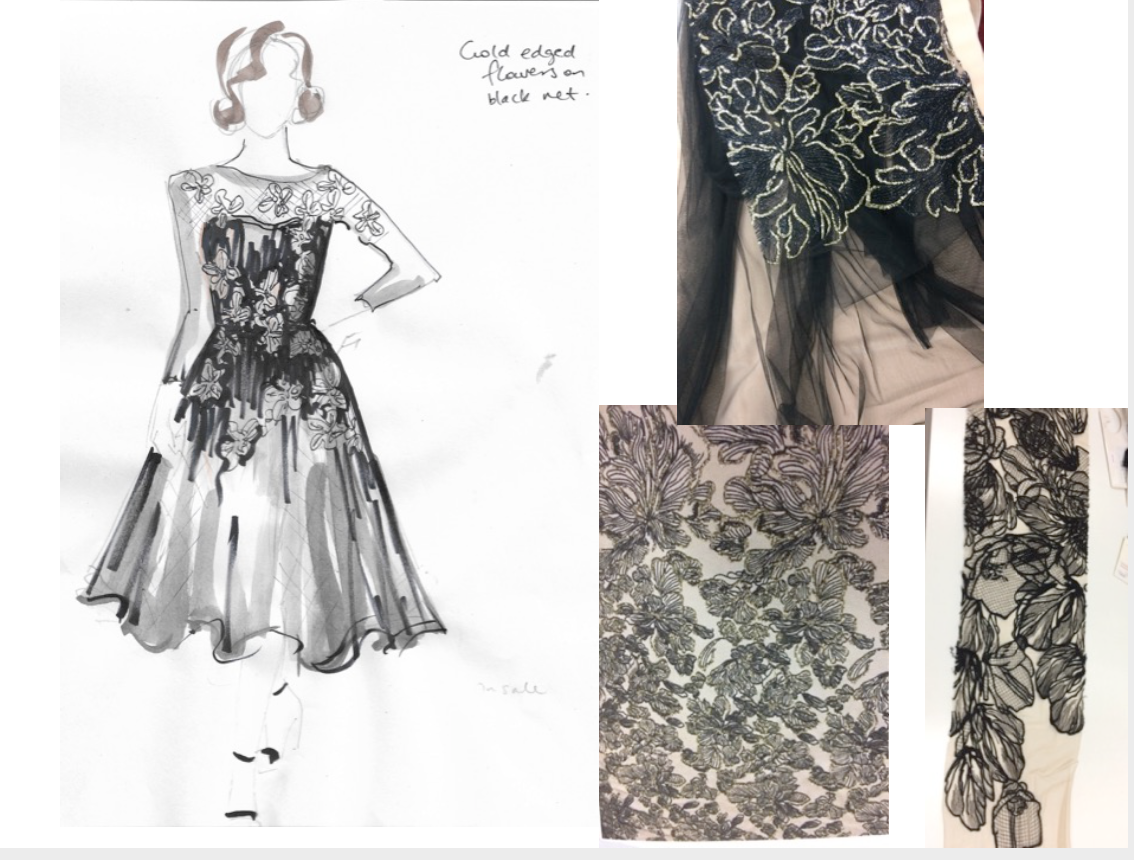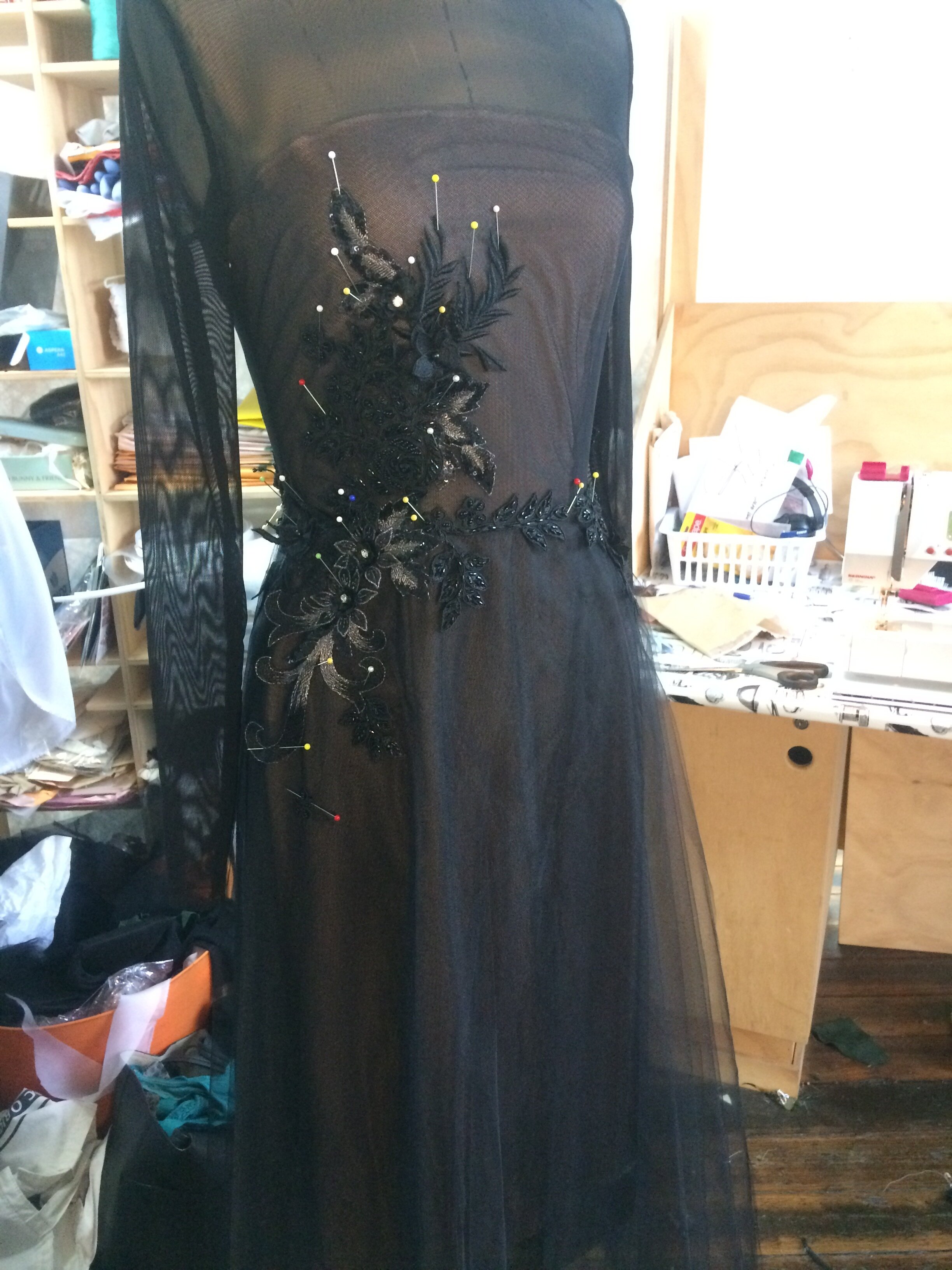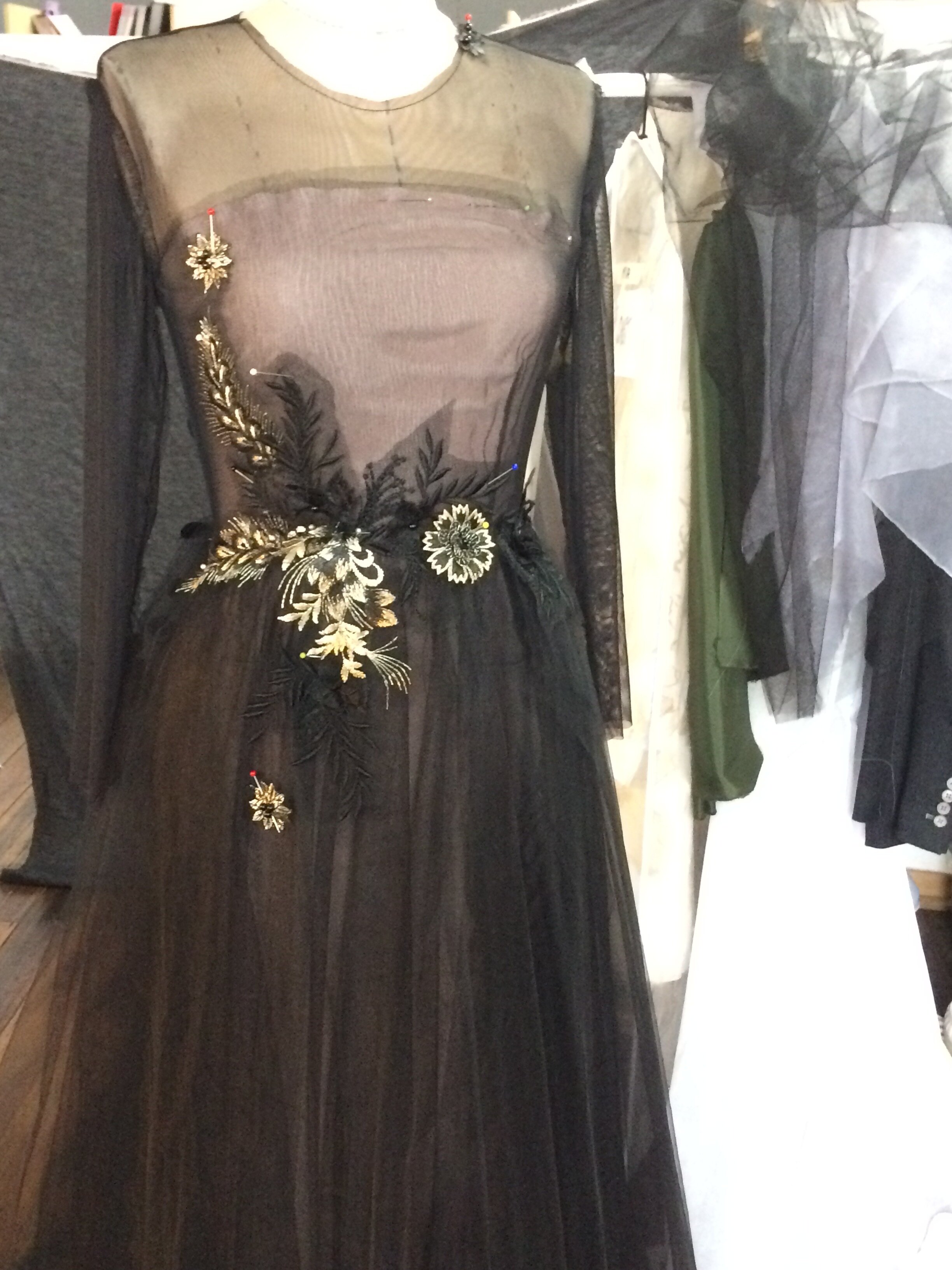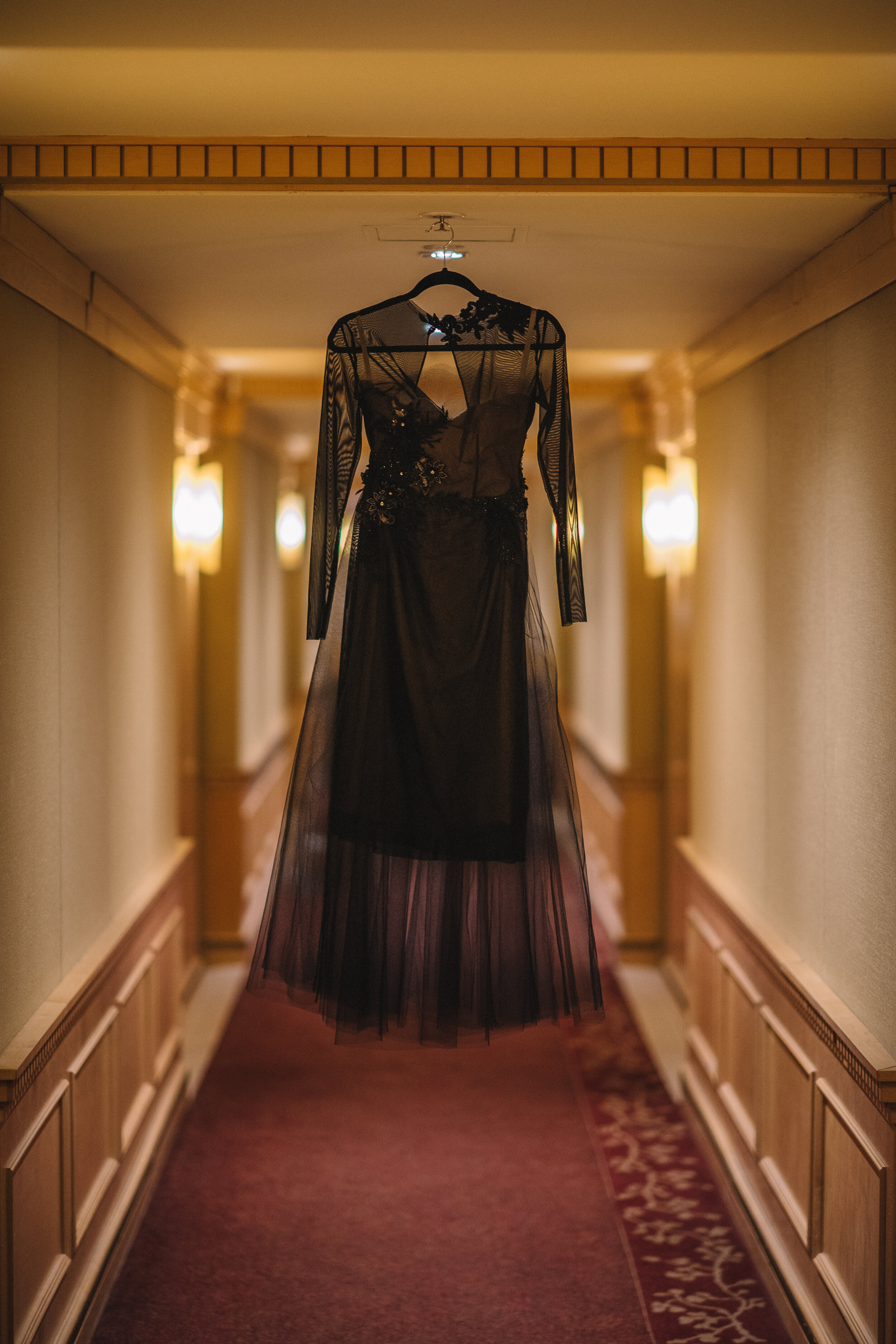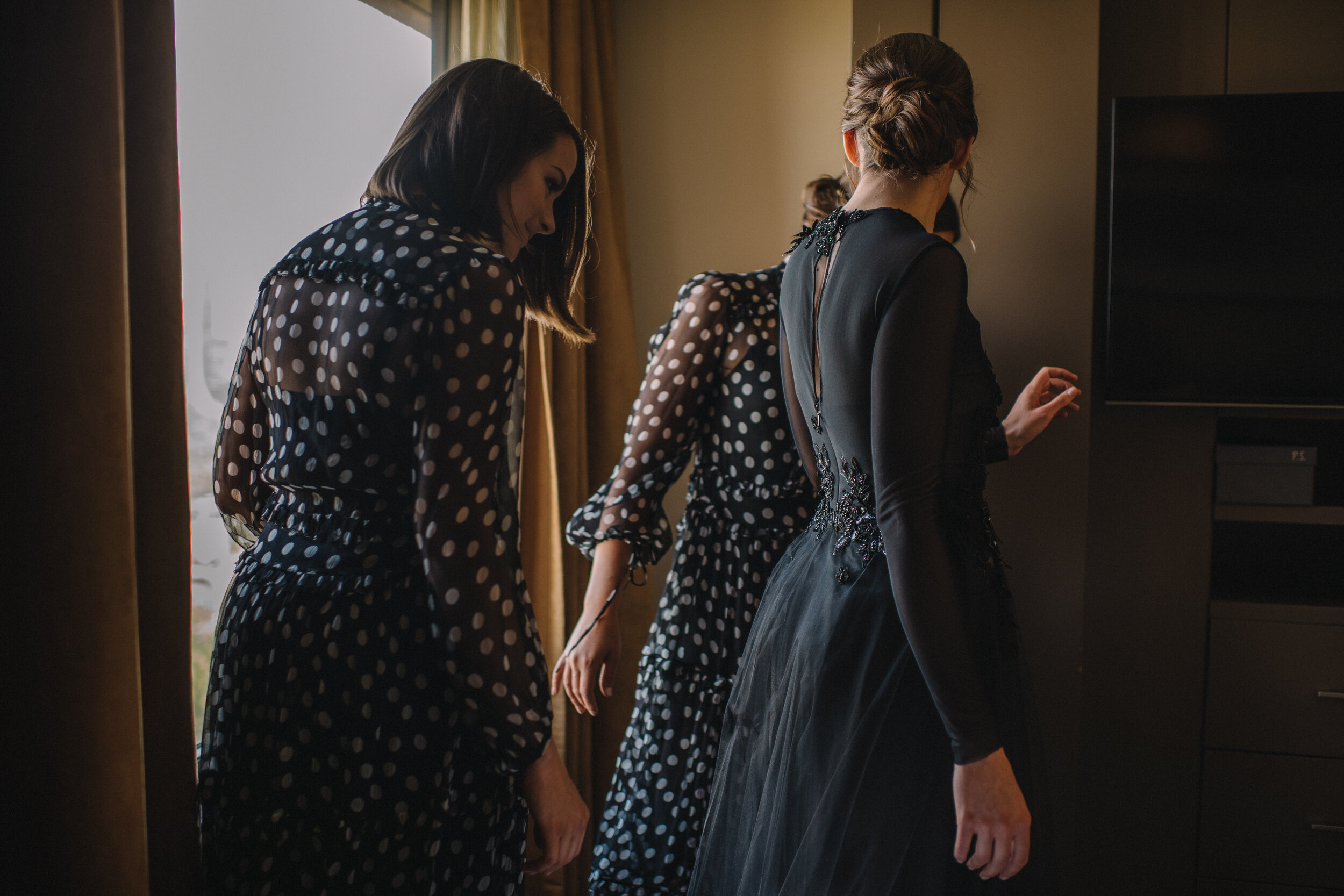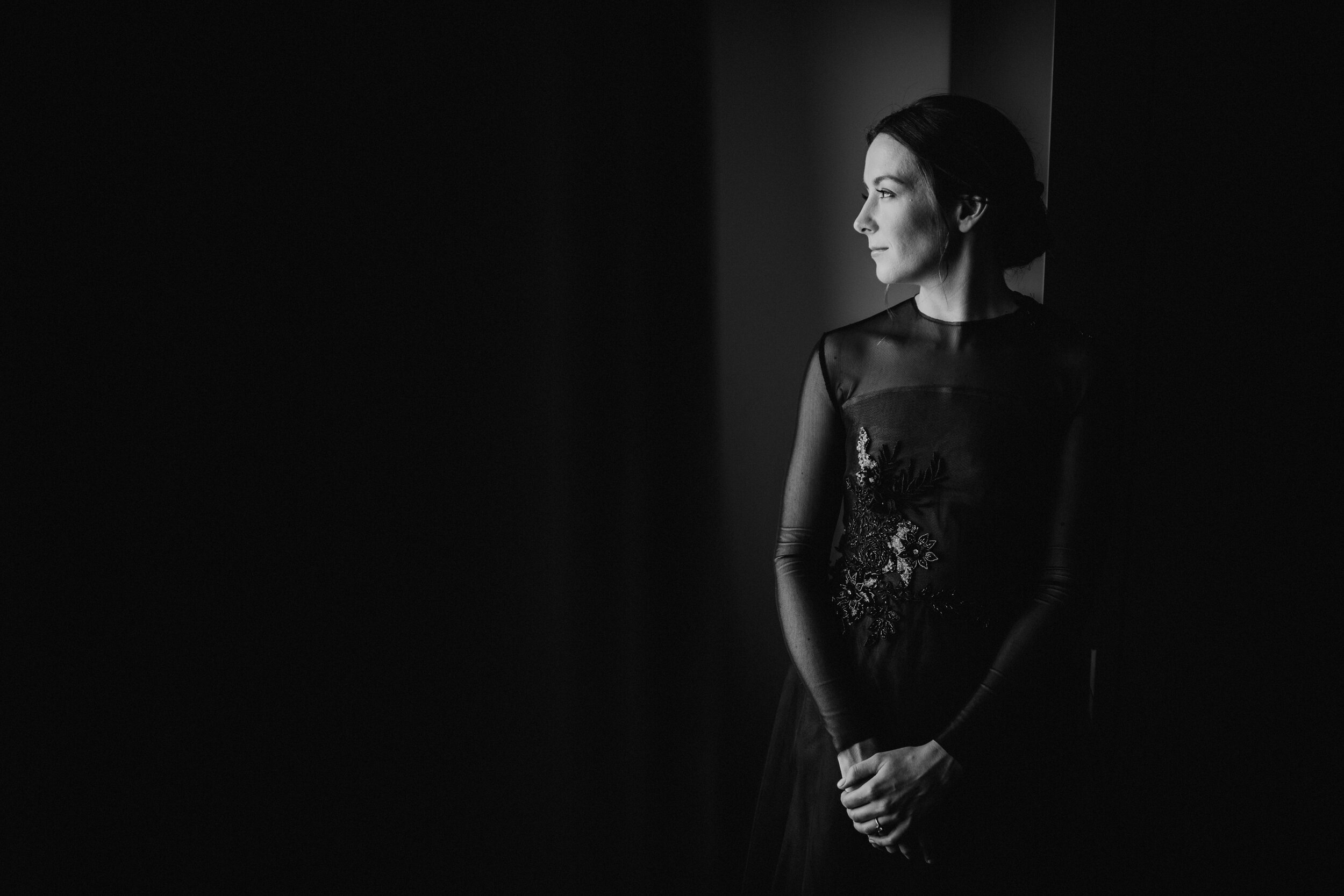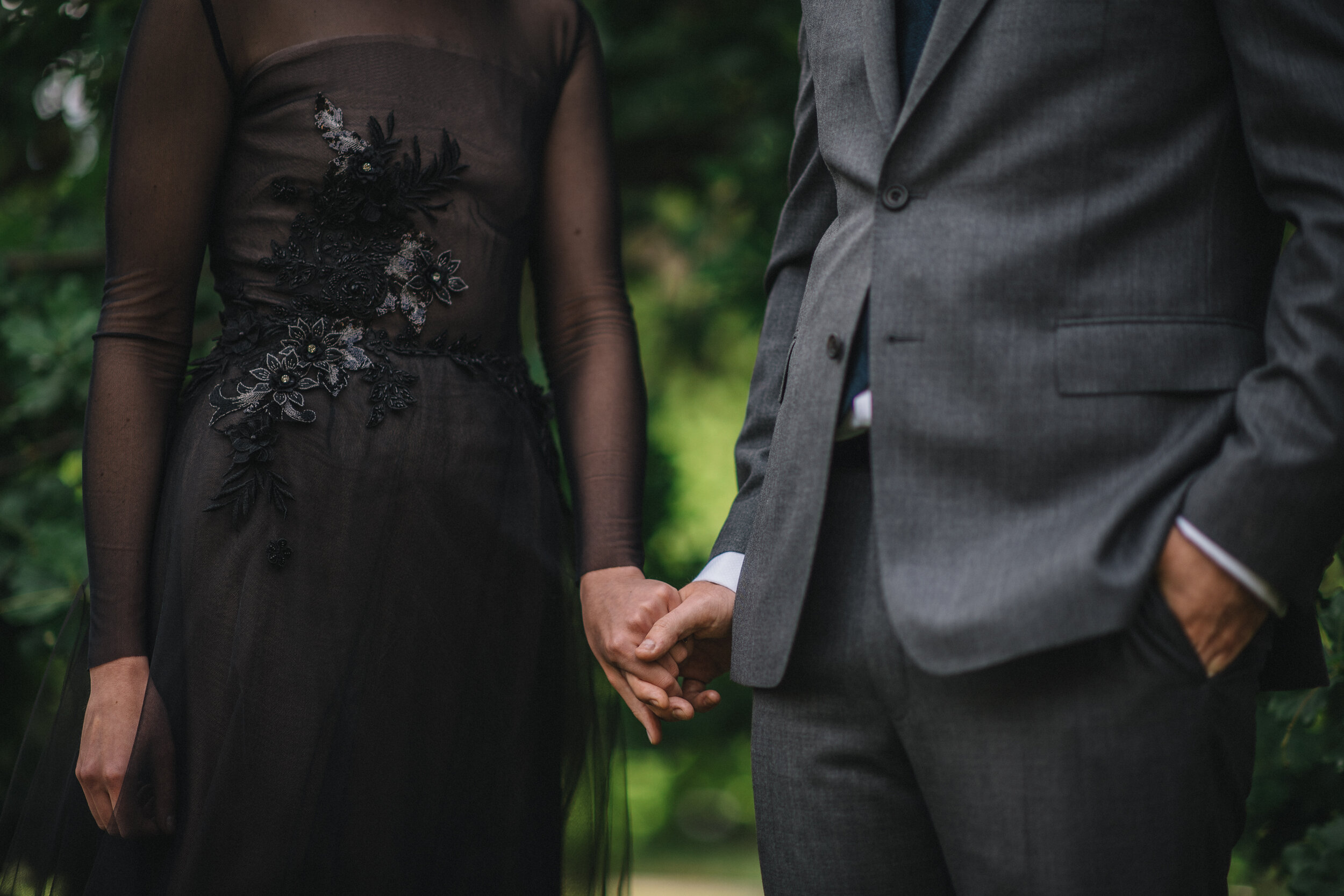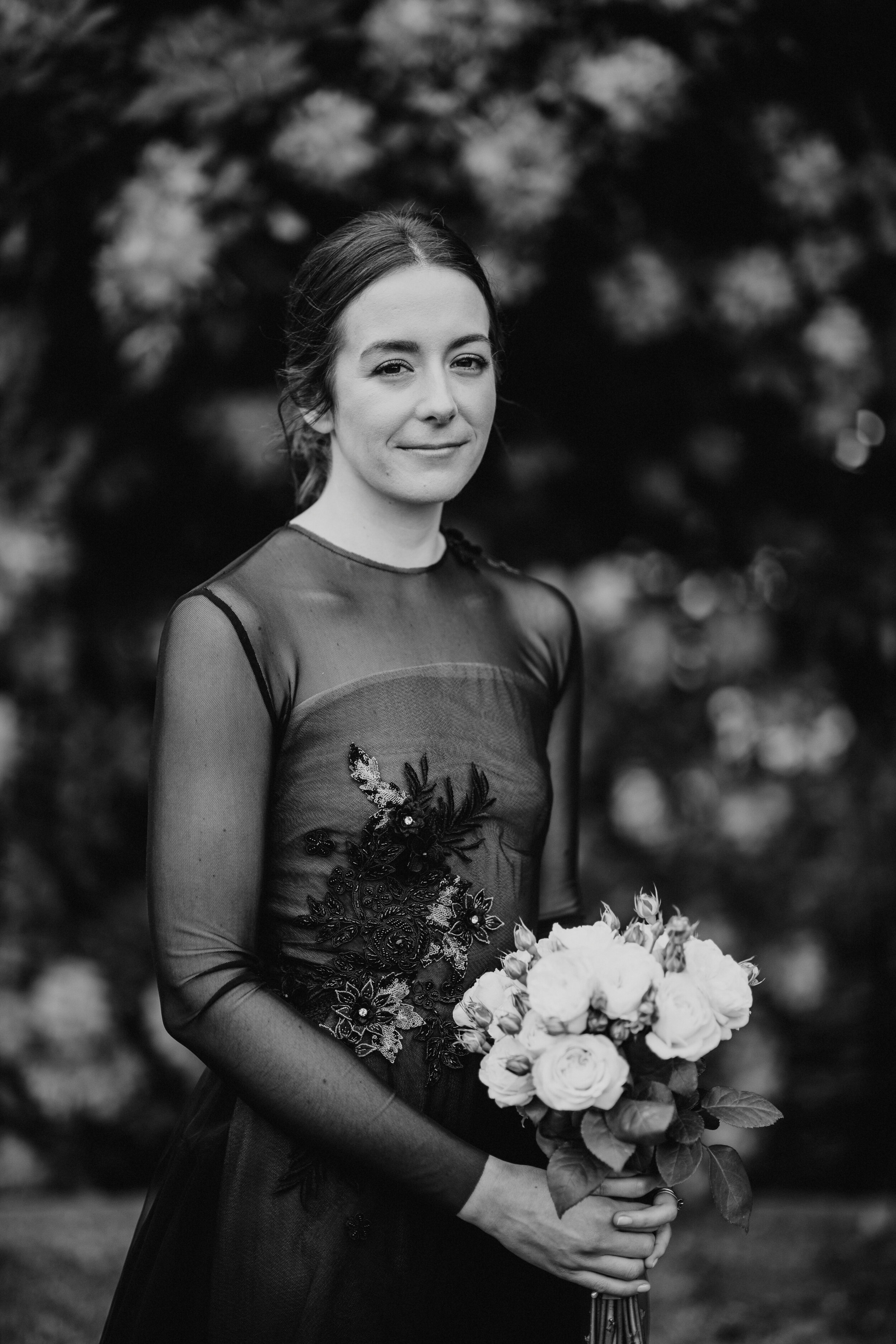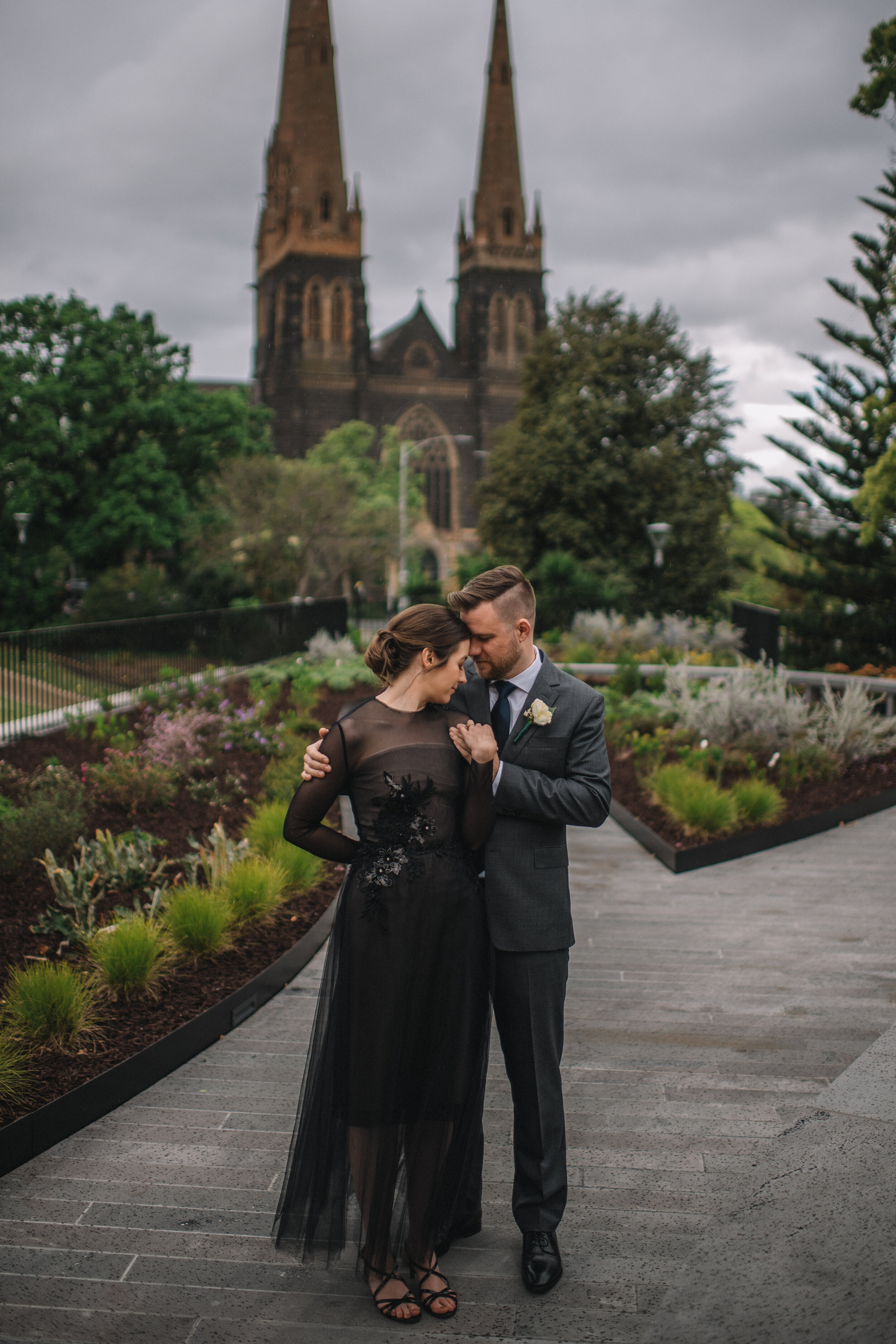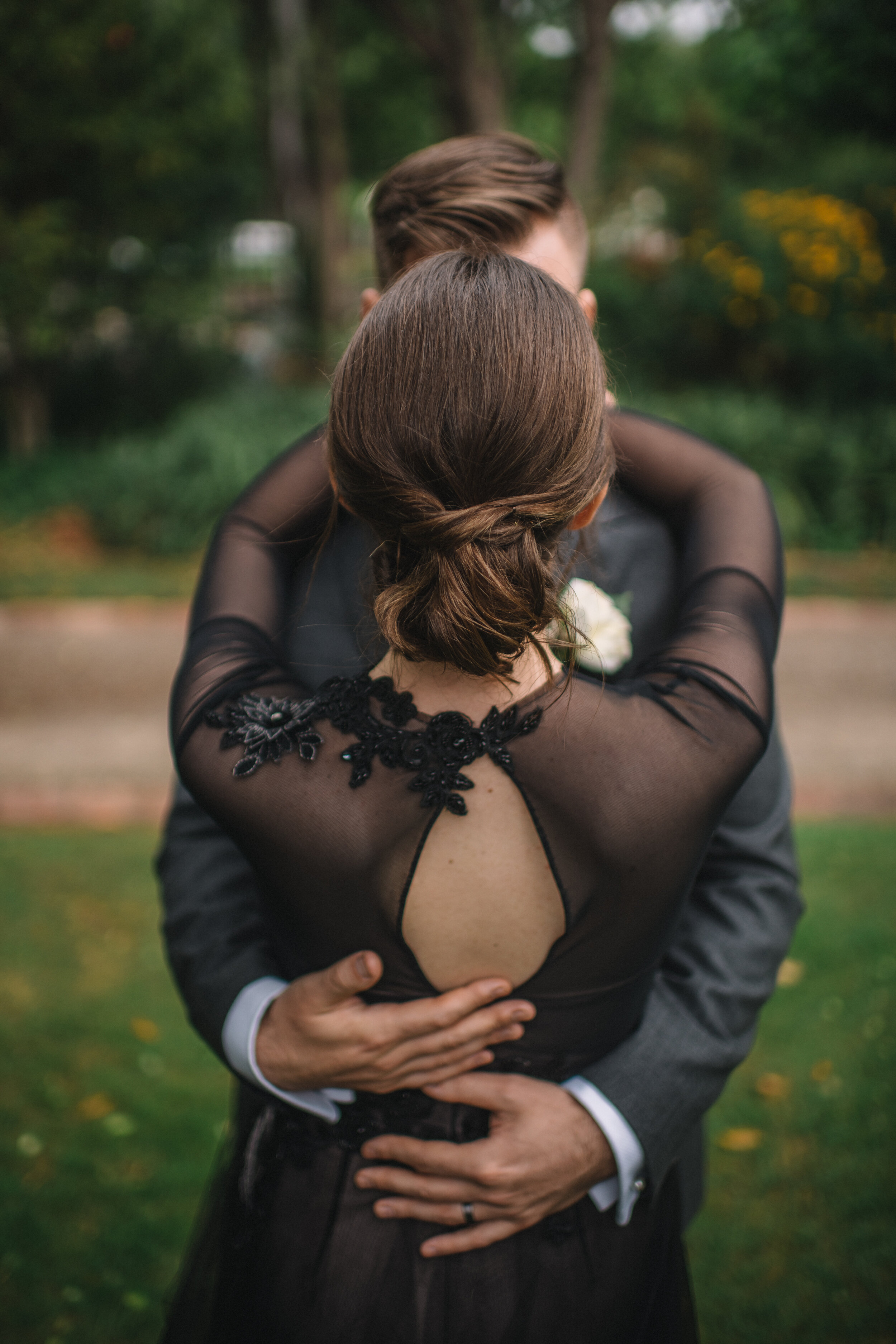Today I have a beautiful and unique wedding gown to share, and one which charts the importance of being true to your own character and style on your wedding day.
Rose is my husband’s second cousin, and through the years we have been delighted to watch as Rose met Albert, and then of course, became engaged. It was over champagne under the pines in the Botanical Gardens at our family’s Christmas drinks that year when Rose pulled me aside to ask, in hushed tones, if she could talk to me about her ideas for a wedding gown: that she wanted something non-traditional and whether I could help navigate that process.
We got together a few weeks (months?) later and she explained that she wanted a black gown, but was concerned about it being too outrageous, or bold, or inappropriate even. Could she pull it off? In my experience, there is no right colour for a bride anymore. While the dominant image is of a luminous white or pale confection that is explicitly feminine, there are as many permutations of that as there are variations in women - that is to say endless. And I have always fully subscribed to the idea that as women or female-identifying, one of the few truely liberating aspects of our cultured experience is the ability to dress up, to remake ourselves, to express different facets of our character in a way that is both fluid and materially satisfying. Fashion has always functioned in that way for women, as well as often being a burden, but the positives should be accentuated I believe. Take a risk. Be yourself.
Rose is an architect, and so her aesthetic is sophisticated. She is confident communicating visually, and understands the capacity for clothes to express meaning, so her choice of gown was always going to be an extra step along from what many people are comfortable in choosing to express on such a big day.
We began by looking at a range of romantic, highly textural, and mostly dark, gold or embellished gowns, mostly from Oscar de la Renta’s collections from 2018, below.
She was drawn to the contrast of the classical silhouette of the full skirt/fitted bodice, so reminiscent of the Dior/Givenchy golden era romance, set against a more modern choice of bold colour and organic embellishment details. Rose also knew she wanted a sheer yoke and sleeves, and black felt like a natural choice for this idea, in a sophisticated cocktail style that suited both her lifestyle and her wedding venue and time choices.
We spent a bit of time investigating embellishment details, because to me this element was the guiding design choice; whether she liked large, soft fluttering petals on tulle, or heavily encrusted vines on chiffon, would determine both the amount we could afford, the structure of the gown and the colours we layered.
As a guide, embellished nets start from about A$70 a meter (which could be only 60 or 90cm wide) to upwards of A$900/m for European designer fabrics, so it’s essential to define these choices early on. After a lot of conversations about this one detail, I sketched a series of variations based on a shortlist of embellishments we found, so she could see how they worked. We looked at Tylers in Richmond, and online. Tessuti also have a beautiful range of embellished laces, and beaded tulles.
In the end we actually decided to go with a range of items from Esty. This allowed us to be more creative and individual with the placement and design of the embellishment on the gown, and Rose would be able to choose exactly what went where during the fitting process.
Rose’s dress was built on a high-quality, heavy, blended acetate stretch satin-backed crepe, as our mothers used to call it. She wanted a bodice that was basically self-sustaining and effortless (something every dressmaker wants to hear!) The softness and lack of boning was essential in conveying the modernity of this dress, as opposed to a more traditional strapless construction with shapewell and boning that encases the body stiffly and refers to the 1950’s version of this style. The beauty of the ODLR gowns is definitely in their effortlessness and we sought to maintain that feeling overall, to allow Rose to own the gown and not be overwhelmed by the design.
I used just two pieces of rigelene in the side seams on the bodice to keep it up, as well as anchoring the net overlay under the arms. I layered two different black nets over the nude acetate stretch, one being the soft nylon skirt tulle, and the other the stretch net of the bodice overlay.
While the inspiration images where quite voluminous in the skirt, ultimately, Rose chose a more streamlined silhouette that was less fussy, and I think it suited her. I cut six half circles from the soft black net and layered them in a couple of variations that gave Rose a choice between a more traditional volume (in the image above far right) with some gathering at the waist seam, or the flatter layers that she chose in the end, which gave a less severe demarkation between bodice and skirt depth of black. This was a constant consideration and with less embroidery to help blend the waist seam line, we had to really pare back the contrast in order for the whole gown to look continuous. I made sure we had the same number of layers of tulle and stretch net on the bodice and skirt, by putting the stretch net under the tulle net on the pencil skirt that formed the under-skirt or lining, whereas the stretch formed the outermost layer on the bodice, of course, for the sleeves and over-bodice.
We really enjoyed playing with the placement of the individually cut embroidered pieces, which I pre-set in the workroom, and them we fixed their position during her final fitting. We chose about six different sets from Etsy in a mostly silver, pewter and black colour way and then I pieced them together, which created a more unique end product, and allowed us to trail them as we wished over the bodice and skirt.
In the end it was a beautiful spring wedding on a suitably dramatic Melbourne day, and Rose’s aesthetic choices created an elegant and individual wedding gown that I think captured her understated, feminine style perfectly.
Photography by Jakub Fabijanski
